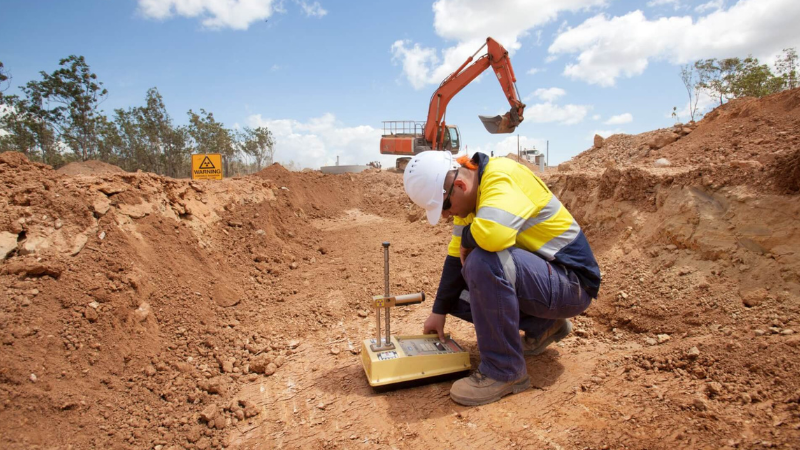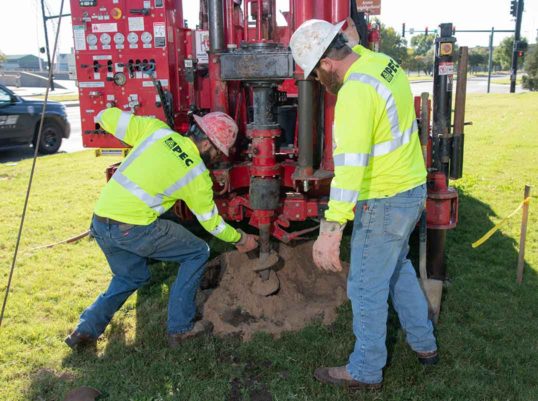Why the Geotechnical Industry Requirements Ingenious Solutions Now
Wiki Article
Comprehending the Comprehensive Duty of Geotechnical Designers in Ground Examination and Dirt Analysis for Construction Jobs
Geotechnical engineers are indispensable to the success of building tasks, offering essential insights via extensive ground examinations and soil evaluation. Their knowledge in analyzing soil habits and employing sophisticated screening techniques notifies essential decisions that promote structural stability and safety and security. By determining possible hazards and working together with multidisciplinary groups, these specialists considerably affect task end results, including efficiency and cost-effectiveness. Nevertheless, the ins and outs of their duty often prolong past these features, motivating a much deeper exploration into the approaches they utilize and the ramifications of their searchings for on total task viability.Function of Geotechnical Engineers
The critical role of geotechnical engineers in building and construction tasks can not be overemphasized, as they supply necessary insights into soil actions and website problems. These experts are entrusted with analyzing the viability of the ground for various types of frameworks, making sure security and stability throughout the construction procedure. Their expertise incorporates a wide variety of activities, including website characterization, soil sampling, and laboratory screening, which are important for identifying the physical and mechanical buildings of the dirt.Geotechnical engineers use their findings to establish foundational layouts that fit load-bearing demands and mitigate threats associated with dirt slope, liquefaction, and settlement security. They play a vital role in identifying possible hazards, such as groundwater fluctuations and contamination, which can significantly impact task stability. Additionally, they team up with architects, civil engineers, and service providers to make certain that geotechnical considerations are incorporated into the general design and building stages.
Ground Investigation Strategies
Ground examination strategies form the foundation of geotechnical design, making it possible for designers to gain an extensive understanding of subsurface problems. These methods are crucial for assessing soil residential properties, establishing groundwater degrees, and recognizing potential geological hazards.Common methods consist of borehole exploration, which allows for the extraction of soil samples at numerous midsts, giving crucial information for evaluation. In addition, sitting screening methods, such as Conventional Penetration Tests (SPT) and Cone Penetration Examinations (CPT), are used to examine soil strength and density straight in the ground.
Geophysical methods additionally play a considerable function in ground examinations. Methods such as seismic surveys and electric resistivity tomography assistance evaluate subsurface attributes without comprehensive excavation. geotechnical eng. These non-invasive approaches are especially advantageous in delicate or big areas where disruption have to be lessened
Additionally, exploratory trenches can be excavated to visually evaluate soil layers and recognize any type of anomalies. Each of these techniques adds distinct insights, enabling geotechnical engineers to create precise website evaluations and educate design choices. In summary, a combination of these ground examination methods is vital for successful building and construction projects, making certain safety and architectural integrity.
Dirt Analysis Techniques
Dirt analysis techniques are critical for comprehending the chemical and physical residential properties of soil, which straight influence the style and building and construction of foundations and various other frameworks. Various methods are used to assess soil features, guaranteeing that geotechnical engineers acquire precise information for notified decision-making.One frequently made use of technique is grain dimension evaluation, which establishes the distribution of particle sizes within a soil example. This is essential for categorizing dirt types and predicting their actions under useful link lots. One more important technique is Atterberg limitations screening, which examines the plasticity and moisture web content of fine-grained dirts, offering insights right into their engineering homes.

Area examinations, such as Conventional Infiltration Tests (SPT) and Cone Infiltration Examinations (CPT), offer useful in-situ information concerning dirt strength and stratification. Collectively, these dirt analysis techniques create the foundation of geotechnical investigation, permitting engineers to create reliable and safe structures customized to the specific conditions of the website.
Threat Mitigation Techniques
Carrying out effective danger mitigation methods is important for geotechnical designers to deal with potential difficulties in building tasks. These strategies are crucial in determining, analyzing, and taking care of risks connected with soil conditions, site stability, and groundwater changes, which can negatively impact job results.One key technique includes performing extensive website investigations that utilize sophisticated geophysical techniques and comprehensive soil tasting. By acquiring exact information on subsurface problems, designers can make enlightened choices on style and building techniques. In addition, employing predictive modeling tools allows for the simulation of various situations, allowing designers to predict potential problems and execute safety nets.
Furthermore, establishing clear interaction networks among project stakeholders promotes a joint strategy to take the chance of management. Regular updates and assessments guarantee that all celebrations are conscious of the advancing website conditions and can adjust their methods as necessary.

Influence On Construction Jobs
The effectiveness of risk reduction methods straight affects the general success of construction jobs. Geotechnical engineers play a pivotal duty in this domain name, as their expertise in ground investigation and soil analysis informs critical decisions throughout the building process. By accurately evaluating soil problems and identifying potential risks, these experts allow project teams to design reliable options that decrease risks associated with ground instability, water seepage, and other geotechnical challenges.The impact of thorough geotechnical evaluation appears in various facets of building and construction tasks, including price administration, project timelines, and architectural stability. Early identification of concerns permits timely treatments, lessening costly hold-ups and budget overruns. An extensive understanding of website conditions boosts the design and design process, making sure that frameworks are developed to hold up against environmental stress and potential natural calamities.
Eventually, the payments of geotechnical engineers are important to the effective execution of building tasks. Their work not just fosters security and conformity with policies yet also improves the lasting sustainability of structures, making sure that they execute efficiently throughout their designated life-span. The collaboration between geotechnical groups and various other stakeholders is necessary for achieving ideal end results in construction ventures.
Final Thought
To conclude, geotechnical engineers perform a critical function in construction jobs with thorough ground investigations and soil analyses. Their know-how in assessing dirt habits, utilizing continue reading this numerous examination strategies, and implementing risk mitigation strategies considerably adds to the architectural stability and security of constructed settings. By teaming up with multidisciplinary groups, these specialists boost task effectiveness and make certain conformity with security requirements, eventually causing successful construction outcomes and decreased potential hazards.Geotechnical designers are indispensable to the success of building and construction jobs, offering important insights via thorough ground examinations and soil analysis.The crucial function of geotechnical engineers in construction tasks can not be overemphasized, as they supply necessary insights into dirt behavior and website problems. Their competence includes a wide array of tasks, including website characterization, soil sampling, and research laboratory testing, which are crucial for establishing the mechanical and physical buildings of the dirt.
By accurately analyzing soil problems and determining possible dangers, these experts make it possible for job groups to develop effective options that reduce threats linked with ground instability, water infiltration, and various other geotechnical obstacles.
In final thought, geotechnical engineers execute a crucial function in building tasks with thorough ground investigations and dirt analyses.
Report this wiki page